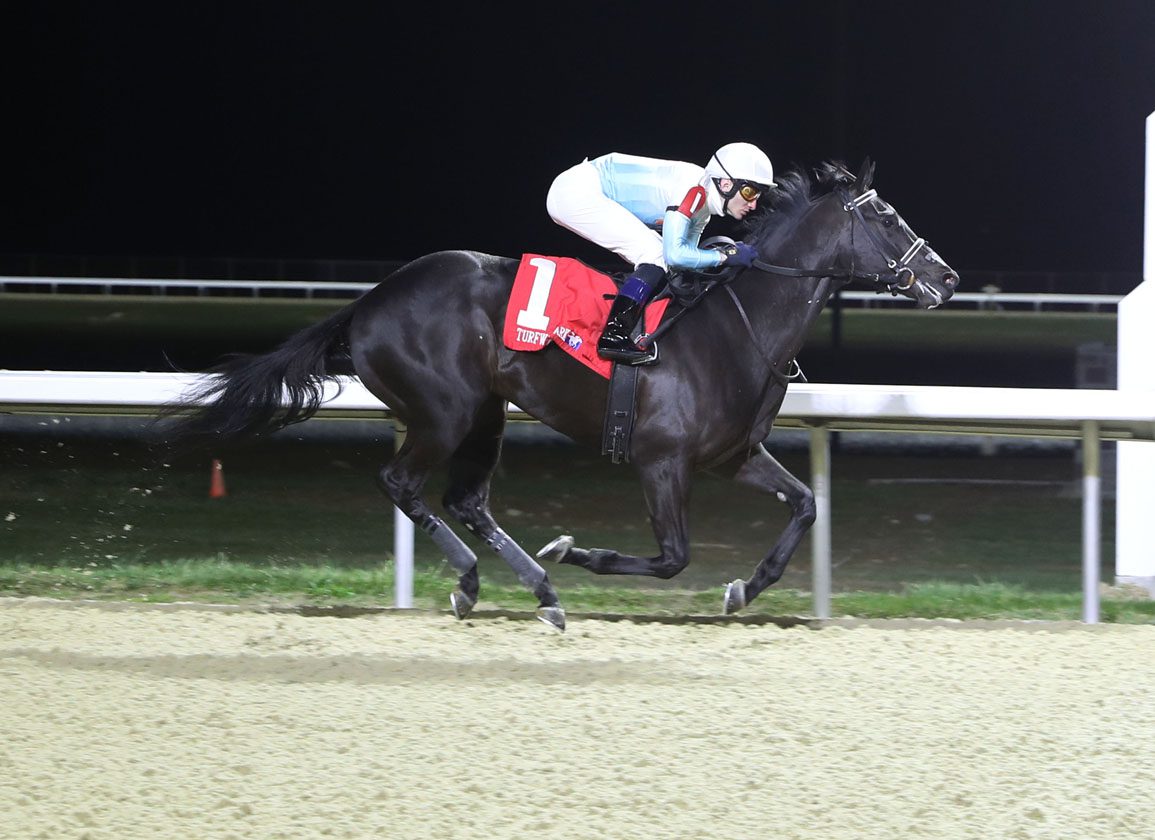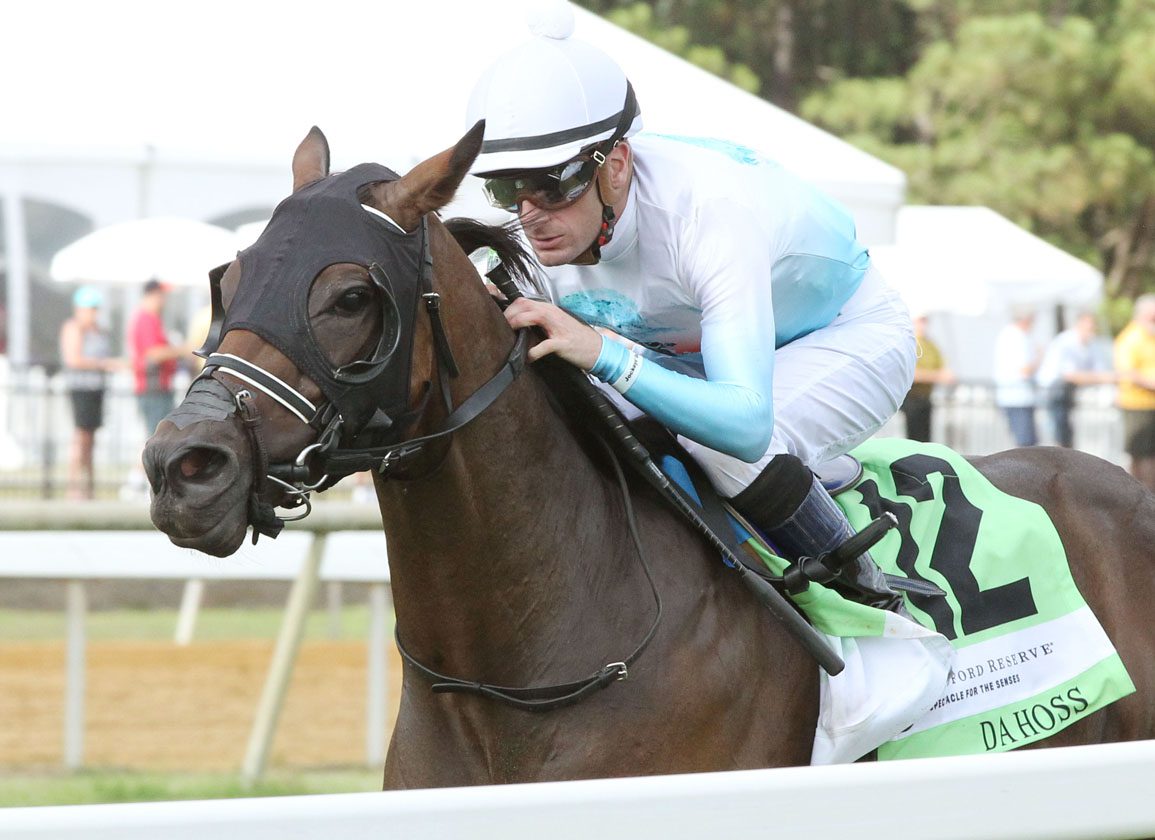Five weeks ago, Ben Colebrook had to jump through quite a few hoops to make sure he could see both of his top 3-year-old colts make the starting gate on the road to the Kentucky Derby. Without so much as pausing to get his picture taken after Raise Cain's (Violence) victory in the GIII Gotham S., the conditioner hopped on a plane bound for Kentucky to saddle Scoobie Quando (Uncle Mo) ahead of a runner-up effort in the John Battaglia Memorial S. at Turfway just over four hours later.
This time around, Colebrook decided to avoid the tumultuous travel schedule altogether, ensuring that he would be on-site to watch both of his stable stars perform, as the pair of colts are pointed for Saturday's $1 million GI Toyota Blue Grass S.
While Colebrook said it would have been ideal to keep the two sophomores–who are both campaigned by Andrew and Rania Warren–separate for their final Kentucky Derby preps, he opted against shipping Raise Cain back to Aqueduct for the GII Wood Memorial S. and ultimately decided it would be best to remain at their home track.
Raise Cain has already proven himself at Keeneland. The son of Violence broke his maiden and ran third in the Bowman Mill S. there last fall and then trained at the Lexington oval throughout the winter. Following his 7 1/2-length score in the Gotham, where he earned a career-high 90 Beyer Speed Figure going from eleventh to first over a muddy Aqueduct track, the bay has put in two works at Keeneland, most recently going four furlongs in :47.80 on Mar. 30.
“He came out of the Gotham in good shape and he's had two nice works here,” Colebrook explained. “He's familiar with the surroundings and he's won here before, so he's coming into the race really well.”
Entering his first Grade I contest as the third choice with morning-line odds of 9/2, Raise Cain will break from post 10 in an 11-horse field with Joel Rosario aboard. Colebrook explained why he believes the race–and the post position–will favor the colt's closing running style.
“On paper it looks like there will be some pace and hopefully from that outside post [he can] just get over and work out a trip like he did in the Gotham where he can make that one run and sustain it. We're just looking for a good race and something to build off of to hopefully go on to Churchill.”
While Raise Cain has already secured 54 points on the Road to the Kentucky Derby, his stablemate Scoobie Quando will need a breakthrough performance on Saturday for a chance at making it to the Derby starting gate.
Unraced at two, Scoobie Quando was confidently placed for his winning debut in the Turfway Prevue S. in January. He ran second in his next two starts at Turfway, getting lost in the pack and making late moves in both races.
“He went all the way back to last at the top of the stretch and then he flew home,” Colebrook said of the colt's second-place effort 3 ½ lengths behind Congruent (Tapit) in the John Battaglia last time out. “Nothing against the winner, who ran a great race, but I think the margin would have been closer and it would have been a horse race had we gotten out earlier.”
Scoobie Quando was initially slated for the GIII Jeff Ruby Steaks on Mar. 25, but a minor skin issue the morning of the race forced him to scratch. While Colebrook considered running the son of Uncle Mo in the GIII Lexington S. on April 15, he ultimately decided that the timing of the Blue Grass would be the ideal setup for a Derby bid.
That initial setback from the Jeff Ruby scratch may have proven to be a blessing in disguise as Colebrook said that Scoobie Quando seems to have taken to the main track as he prepares for his dirt debut. The colt breezed a sharp five furlongs in :59.80 (1/13) over the Keeneland main track on Mar. 30.
“We worked him very aggressive on the dirt and he worked really, really well,” Colebrook noted. “[Jockey] Luan Machado was on him and thought he got over the dirt surface better than the Tapeta. So Scoobie over the dirt is a little bit of an unknown, but in the mornings he certainly seems like he really relishes the track.”
'Scoobie' may be the less experienced of Colebrook's two Blue Grass contender, but the trainer spoke highly of both horses.
“They're both very quality horses,” he said. “I think Scoobie has always shown a little bit more brilliance in his works. Raise Cain has always been kind of workman-like and does everything you ask of him. He was one that when you ran him first time, he didn't even know what was going on because he was so relaxed. He's just very reliable. Scoobie has certainly done nothing wrong so far, but he's just a little more inexperienced at this stage because he got a later start.”
A native of Central Kentucky, Colebrook grew up attending the Keeneland race meet with his father. The horseman is now in his eleventh year of training and Keeneland has become the setting for some of his best achievements. He saddled his first winner there in 2013, scored his first graded stakes win with Sparking Review in the GIII Pin Oak Valley View (Lemon Drop Kid) a year later, and celebrated his first career Grade I victory with Knicks Go (Paynter) in the GI Claiborne Breeders' Futurity in 2018. This weekend, he hopes to add another 'first' to the list as he saddles his first two runners for the famed track's premier Derby prep race.
“This will be my first time with a runner in the Blue Grass and to have two in it is crazier,” he said. “It's a dream come true just to have a horse that's good enough to run in the Blue Grass because I grew up watching the Blue Grass as a kid. It's one of the biggest preps for the Derby and it's here at our home track so it's a big deal to even be in the race. We're super proud of that and hopefully they both can give a good account of themselves, which I think they will.”
The post Colebrook Sends Two Runners to Blue Grass Debut appeared first on TDN | Thoroughbred Daily News | Horse Racing News, Results and Video | Thoroughbred Breeding and Auctions.




